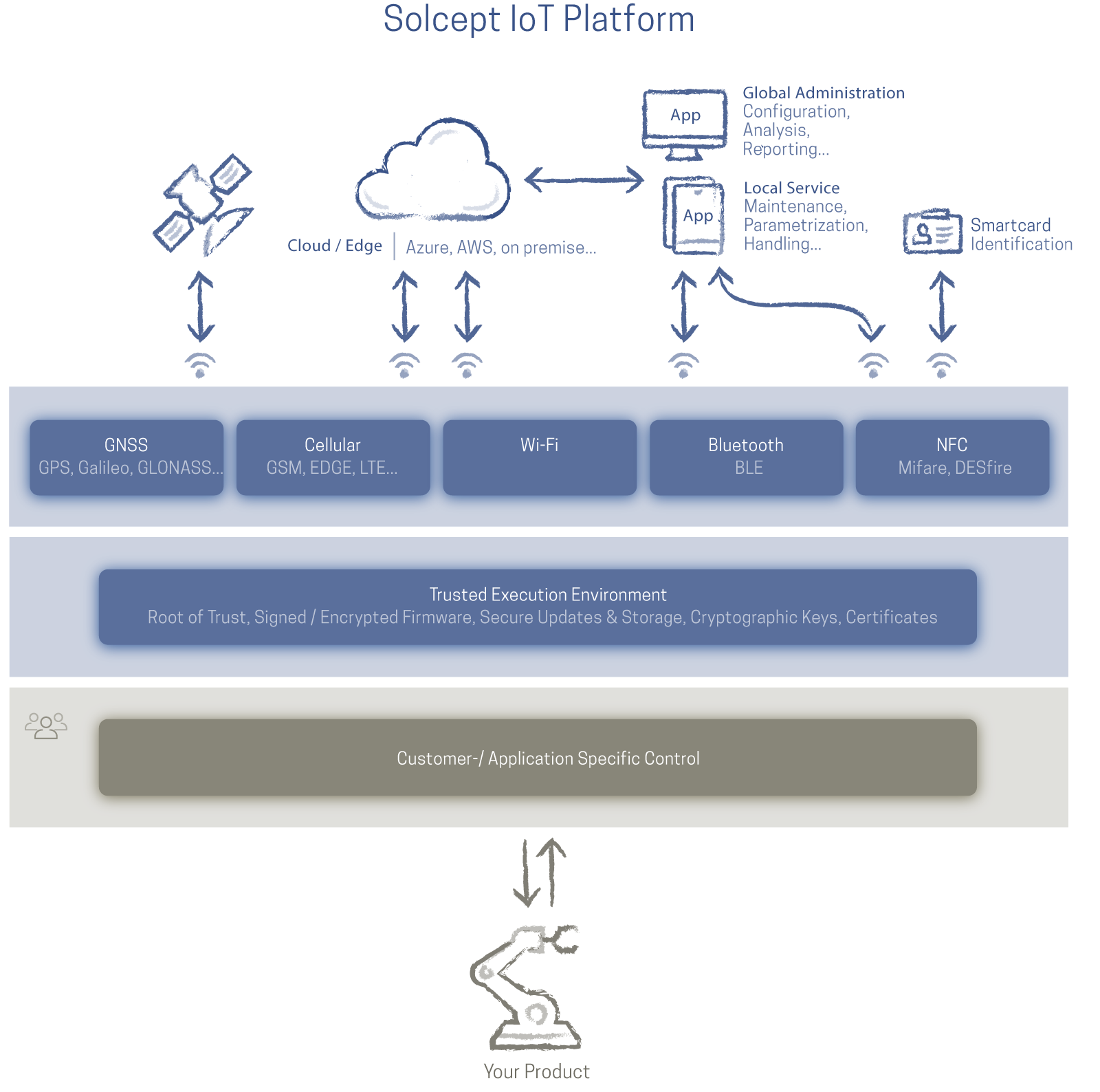
Functionality
The platform offers these options (see also the drawing above: blue part):
- Communication with the Internet/ the cloud:
- on the road and outdoors via cellular mobile
- in closed buildings via Wireless LAN
- Communication with the local operator
- using a smartphone, tablet or laptop
- for data: Bluetooth
- for identification/security: NFC
- via a local operator interface
- LCD display (alphanumeric or graphic)
- Touch
- using a smartphone, tablet or laptop
- Location by satellite navigation
- Application Framework
- infrastructure framework for modular and maintainable applications
- automatic generation of protocol code
The non-functional requirements that the design fulfills are also important. These are often the larger limitation than the functional aspects:
- Data security
- built-in hardware secure element (Root of Trust)
- secure processor/ system on chip
- secure certificate and key store
- encryption
- identification
- Power supply
- Lithium batteries (industrial temperature range -30..85°C)
- wireless charging
- low power for long service life and easy cooling (especially the communication modules can have a significant power consumption and corresponding cooling requirements)
- Secure software updates via the Internet, secure boot of the controller
- Protocols
- MQTT (Message Queuing Telemetry Transport)/ AMQP (Advanced Message Queuing Protocol)
- CoAP (Constrained Application Protocol)
- Industrial quality
- temperature range -40/ -30 (batteries)..+85 °C
- long product lifetime (long-term availability)
- EMC and radio certification
- developed according to Solcept processes (CMMI for Development (Maturity Level 3), ISO 9001)
Your Application
The specific application can include, but is not limited to:
- Operator interface
- local operating interface
- communication with app (operation via smartphone, tablet, laptop)
- Identification
- Analysis and signal processing of sensors
- position (satellite navigation)
- temperature, humidity, air quality
- position in space, position, distance
- vibrations, acceleration, forces, weight
- current, voltage measurements
- Control of actuators
- switching of (resistive) loads
- stepper, DC, BLDC motors
Technology Base
This Standard System Design is based on the following technologies:
- Microcontroller
- ARM Cortex-M33:
- ARM TrustZone
- Co-processor for cryptographic operations
- ARM Cortex-M33:
- Operating system
- Communication
- WLAN (Wireless Local Area Network)/ Wi-Fi
- Bluetooth Low Energy (BLE)
- NFC (Near Field Communication)
- Positioning
- Power Supply
- WPC (Wireless Power Consortium) Qi wireless charging
- low power design of hard- and software
